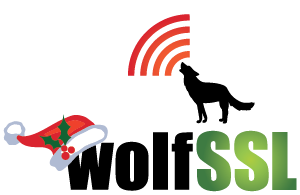Are you looking for a DTLS 1.3 implementation? If so, wolfSSL can provide you a highly robust security solution for datagram transport based off the TLS 1.3 protocol. wolfSSL is excited to announce it will be adding support for DTLS 1.3. To learn more about wolfSSL and DTLS, TLS 1.3, or for more information on […]
Read MoreMore TagCategory: Uncategorized
Differences between TLS 1.2 and TLS 1.3 (#TLS13)
wolfSSL’s embedded SSL/TLS library has included support for TLS 1.3 since early releases of the TLS 1.3 draft. Since then, wolfSSL has remained up-to-date with the TLS 1.3 specification. In this post, the major upgrades of TLS 1.3 from TLS 1.2 are outlined below: TLS 1.3 This protocol is defined in RFC 8446. TLS 1.3 […]
Read MoreMore TagwolfSSL Support for DO-178 DAL A
wolfSSL now provides support for complete RTCA DO-178C level A certification! wolfSSL will offer DO-178 wolfCrypt as a commercial off -the-shelf (COTS) solution for connected avionics applications. Adherence to DO-178C level A will be supported through the first wolfCrypt COTS DO-178C certification kit release that includes traceable artifacts for the following encryption algorithms: SHA-256 for […]
Read MoreMore TagcURL plus Misra
As many people know, cURL is very popular in automotive systems. cURL is used in infotainment, ADAS, entry and control systems. Because many cURL users in automotive are interested in conforming to the MISRA C standard, wolfSSL is developing a version of cURL that conforms to MISRA and consumes our MISRA conformant cryptography. If you […]
Read MoreMore TagwolfSSL Support for WebRTC
We have added in support for the open source project WebRTC (https://webrtc.org/) in wolfSSL release 4.2.0. This is a project that allows real time communication (RTC) with IoT, mobile and web browsers. Many additional API where added to the wolfSSL compatibility layer in order to plug wolfSSL into WebRTC instead of BoringSSL. Below lists some […]
Read MoreMore TagwolfSSL + Nginx
The wolfSSL embedded SSL/TLS library provides support for various open source projects, including Nginx. For those who are unfamiliar, Nginx is a high-performance, high-concurrency web server. Like wolfSSL, it is also compact, fast, and highly scalable. Additionally, wolfSSL also provides support for TLS 1.3 and features such as OCSP, so Nginx servers can be configured with the latest […]
Read MoreMore TagwolfCrypt as an engine for OpenSSL
As many people know, the OpenSSL project is struggling with FIPS, and their new FIPS release is not expected until December 2020. The version of OpenSSL that supports FIPS goes into End Of Life and is no longer supported in December of 2019. This means that OpenSSL users will not have a supported package for […]
Read MoreMore TagwolfSSL with OpenVSwitch
In the latest release of wolfSSL, we have added a new port for using wolfSSL with OpenVSwitch. OpenVSwitch is a multilayer switch to provide switching for hardware virtualization environments. With wolfSSL support, users can now build OpenVSwitch with the configure option –with-wolfssl. The addition of OpenVSwitch is available in wolfSSL 4.2.0, which can be downloaded […]
Read MoreMore TagwolfSSL Support for WebRTC
We have added in support for the open source project WebRTC (https://webrtc.org/) in wolfSSL release 4.2.0. This is a project that allows real time communication (RTC) with IoT, mobile and web browsers. Many additional API where added to the wolfSSL compatibility layer in order to plug wolfSSL into WebRTC instead of OpenSSL. Some of those […]
Read MoreMore TagwolfSSL New TITAN Cache Option
The option to have a massive TITAN size session cache is now available in wolfSSL 4.2.0. This can hold over 2 million session entries and works well for use in desktops and high load environments that have many long lasting session ID’s. To turn on the new session cache size use the enable option –enable-titancache, […]
Read MoreMore Tag
